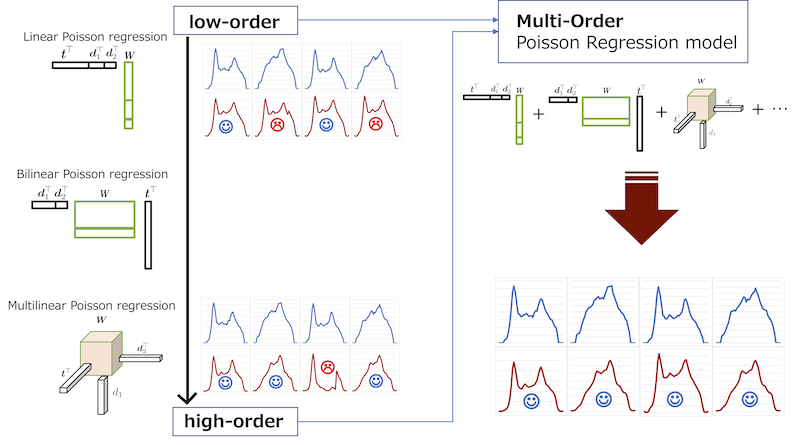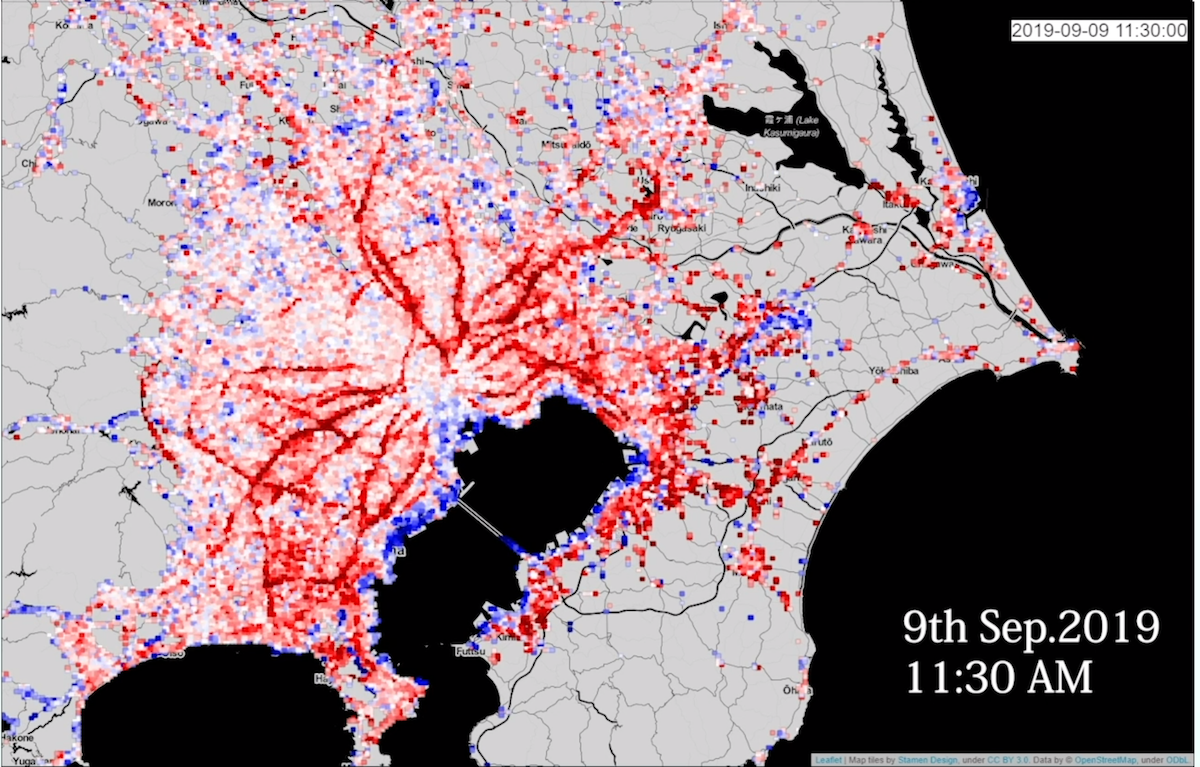
Predicting population density transition in urban regions, i.e., urban dynamics, is playing an increasingly important role in many real-world aspects, such as urban planning, emergency management, public services, and commercial activities. Thanks to the rapidly popularized smart devices, a large amount of GPS data has been accumulated. Therefore, many studies on urban dynamics analysis have utilized mobility logs with GPS information without additional survey costs.

However, a trade-off between simple model representation and complex model can always be found in the prior work of urban dynamics prediction. Furthermore, most of the previous studies tend to choose large-size urban regions in their analysis, although it is of great importance to predict people flow in fine-grained urban regions.

In order to resolve these challenges, we propose a Multi-Order Poisson Regression (MOIRE) model based on an enriched and generalized feature representation of Poisson regression. We also design a practical feature encoding approach which employs polynomial combinations of multiple factors for feature presentation, including factors which greatly affect people flow (e.g., time-of-the-day, day-of-the-week, weather situation, holiday information). We also employ a multi-task learning framework to integrate spatial constraints of different tasks into our MOIRE model, so as to improve the general performance on fine-meshed regions.
We conducted experiments on two massive dataset extracted from smartphone mobility logs with GPS information, including active population in large urban regions and fine-grained mesh regions. The results showed that our proposed method is capable of providing better prediction compared to the state-of-the-art method, on both scales of urban regions.

Furthermore, by using the proposed method, we have constructed a nationwide and high-definition anomaly detection system. In this study, we visualized and analyzed the anomaly detection results of the 2019 Typhoon FAXAI outbreak, and showed that the proposed system is effective even in situations that require extensive and detailed anomaly detection, such as large-scale disasters.
Publications
Masamichi Shimosaka, Kota Tsubouchi, Yanru Chen, Yoshiaki Ishihara, Junichi Sato
MOIRE: Mixed-Order Poisson Regression towards Fine-grained Urban Anomaly Detection at Nationwide Scale
In proceedings of 2020 IEEE International Conference on Big Data, 2020.